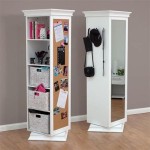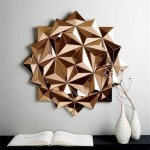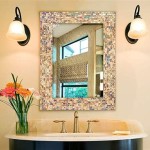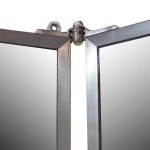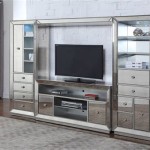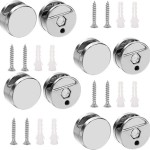Are Antique Mirrors Worth Anything?
Antique mirrors, with their intricate frames and aged glass, often evoke a sense of history and elegance. They can add a touch of charm and sophistication to any room, and their aesthetic appeal makes them desirable collectibles. But beyond their decorative value, a natural question arises: are antique mirrors worth anything? The answer, like many things in the world of antiques, is not always straightforward and depends on several factors.
Factors Influencing Value
The value of an antique mirror is determined by a combination of elements, making it crucial to understand these factors for accurate appraisal. Here are some key considerations:
1. Age and Origin
The age and origin of a mirror are paramount factors in determining its value. Mirrors from the 18th and 19th centuries, particularly those crafted in Europe, are generally more sought-after and hold higher prices. Early American mirrors, especially those from the Colonial or Federal periods, are also highly valued.
For instance, a French Louis XV mirror, renowned for its intricate carvings and gilded frames, might fetch a significantly higher price than a similar-looking mirror produced in the early 20th century. It's essential to research the history of your mirror, including its maker, style, and period of manufacture, to understand its potential worth.
2. Materials and Craftsmanship
The materials used in the construction of the mirror and the level of craftsmanship employed can significantly impact its value. Mirrors with ornate frames crafted from high-quality materials, such as mahogany, walnut, or oak, with intricate carvings and gilding, are typically considered more valuable. Similarly, antique mirrors with exceptional glass, such as Venetian or Murano glass, command higher prices due to their historical significance and aesthetic appeal.
Conversely, a simple, plain mirror made from less expensive materials, even if it is antique, may have lower value. The condition of the materials also plays a role. A mirror with a damaged frame, tarnished gilding, or cracked glass will be worth less than a well-preserved example.
3. Style and Design
The style and design of an antique mirror contribute significantly to its value. Mirrors from specific historical periods, such as the Rococo, Victorian, or Art Deco eras, are often more highly sought after due to their distinctive aesthetics. Mirrors with unique features, such as elaborate floral motifs, geometric patterns, or unusual shapes, can also command higher prices.
For example, a mirror with an intricate Rococo frame adorned with delicate floral carvings and gilded accents is likely to attract more interest and fetch a higher price than a simple, rectangular mirror with a plain frame.
4. Condition and Authenticity
The condition of an antique mirror is an important factor in determining its value. A well-preserved mirror, free from damage or restoration, is generally more valuable than one that has been repaired or altered. Mirrors with original finishes, such as the original paint or gilding, are also more desirable.
Authenticity is also crucial. Antique mirrors that can be traced back to their original maker or period are often more valuable than those whose provenance is unknown. Documentation, such as invoices, letters, or certificates of authenticity, can significantly increase the value of a mirror.
5. Market Demand
Like any collectible item, the value of an antique mirror is influenced by market demand. Mirrors that are popular among collectors, or those that fit current design trends, are likely to fetch higher prices. The overall state of the antiques market also plays a role, with periods of high demand leading to increased values.
For example, if a particular style of mirror, such as a French Empire mirror, becomes highly sought after by designers and interior decorators, its value may increase significantly. Conversely, mirrors that are not as popular or for which there is limited demand may see lower prices.
Appraisal and Valuation
To get an accurate assessment of an antique mirror's value, it's recommended to consult with a qualified antiques appraiser. Appraisers possess the knowledge and experience to evaluate the factors mentioned above, including age, materials, craftsmanship, style, condition, and market demand. They can provide a detailed report that includes a fair market value estimate and a description of the mirror's historical significance.
Several organizations, such as the International Society of Appraisers (ISA) and the American Society of Appraisers (ASA), offer certification programs for antique appraisers. When seeking appraisal services, it's important to choose a reputable appraiser who is qualified to evaluate antique mirrors.
In conclusion, the value of an antique mirror is determined by a complex interplay of factors. By understanding these elements, owners of antique mirrors can gain a better appreciation for their potential worth.

How To Appraise Antique Mirrors Value My Stuff

How To Determine The Value Of An Old Mirror Hobbylark

Antique Mirrors A Guide To Identifying Collecting

7 Rarest Most Valuable Antique Mirrors The Marie Antoinette Mirror Sold For 51 2 Million In 2024 Chronicle Collectibles

How To Value Antique Mirrors My Stuff

How To Value Your Antique Mirror Bespoke Mirrors Art Deco Custom Made

Gilded Vintage Mirror Gold French Mirrors For Value Antique

7 Rarest Most Valuable Antique Mirrors The Marie Antoinette Mirror Sold For 51 2 Million In 2024 Chronicle Collectibles
Antique Mirrors A Buyers Guide Nimbus Antiques

2 738 Antique Mirrors For Ingantiques Co

